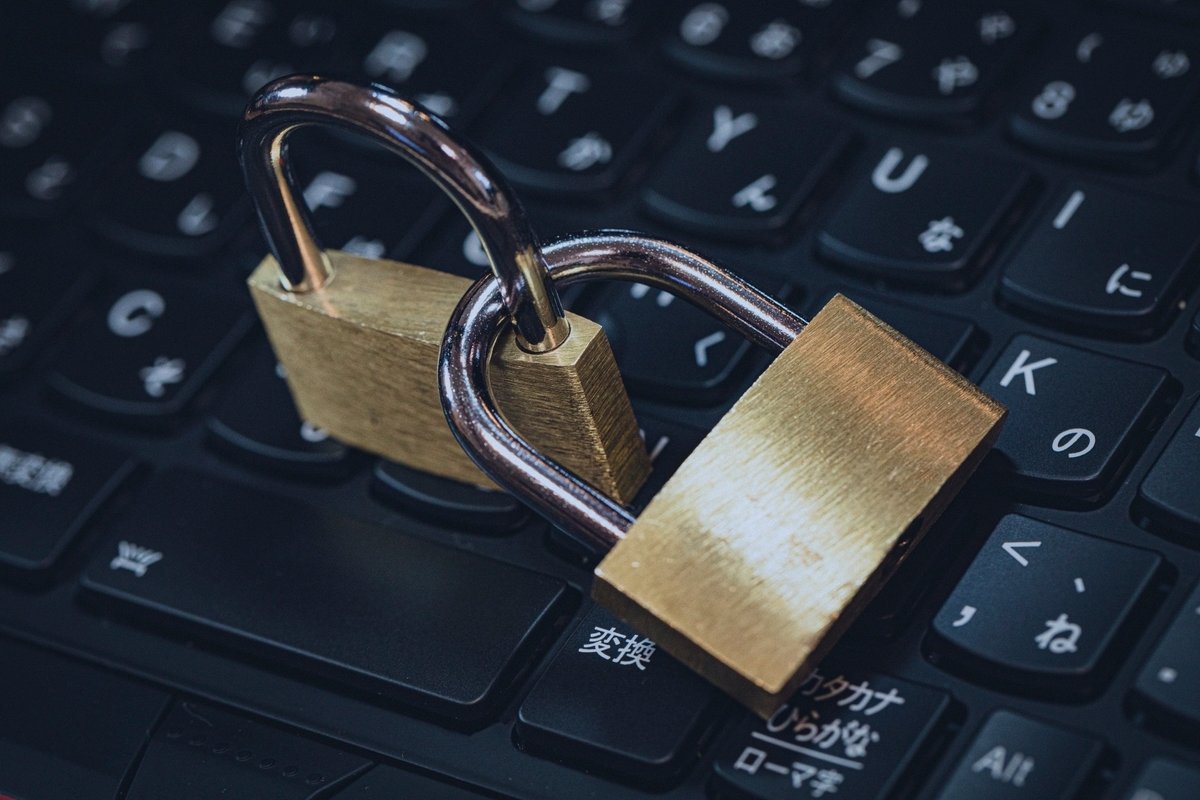Beneath the veil of darkness, when the world succumbs to its slumber, thieves and miscreants silently lurk, searching for their next illicit opportunity. As they navigate the treacherous realm of crime, one thing stands between them and their coveted prize: the impenetrable fortresses that guard our homes, offices, and possessions. But what makes a lock truly secure? Beyond the intricate mechanisms and robust materials lies a captivating realm of psychology, wherein the delicate dance between thieves and security engineers unravels. In this article, we delve into the depths of the human psyche to unravel the enigma behind lock security – exploring the psychological factors that deter potential thieves and provide us with peace of mind when we turn that key.
Table of Contents
- Understanding the Motivations of Thieves: Unraveling the Psychological Factors
- Analyzing Lock Vulnerabilities: Insights into the Thinking of Criminals
- The Role of Perceived Risk: How to Enhance Lock Security
- Psychological Tricks to Deter Thieves: Leveraging Human Behavior
- Expert Recommendations for Optimal Lock Security: Minimizing Vulnerabilities
- Q&A
- The Way Forward

Understanding the Motivations of Thieves: Unraveling the Psychological Factors
Delving into the intricate psyche of thieves allows us to gain valuable insights into the motivations that drive their illicit activities. By exploring the psychological factors that influence their behavior, we can begin to unravel the complex web of reasons behind their actions.
One key psychological factor is the allure of instant gratification. For many thieves, the thrill of acquiring valuable possessions quickly and effortlessly can be irresistible. This desire for immediate rewards often overrides any moral considerations or potential consequences, making theft an enticing option. Additionally, the sense of power and control that accompanies successfully pilfering prized possessions can fuel a thief’s motivation, further perpetuating their criminal behavior.
Moreover, research suggests that certain personality traits and environmental factors play a significant role in shaping a thief’s motivations. Traits such as impulsivity and a lack of empathy can contribute to a heightened risk-taking propensity, making theft seem like an exciting and lucrative endeavor. Furthermore, an environment characterized by economic hardships, limited opportunities, or exposure to criminal influences may push individuals towards theft as they perceive it as a means of survival or a way to escape their circumstances.
- The allure of instant gratification
- Sense of power and control
- Personality traits such as impulsivity and lack of empathy
- Environmental factors like economic hardships and criminal influences
By comprehending these underlying psychological factors, law enforcement, psychologists, and policymakers can work towards developing effective prevention strategies, intervention programs, and rehabilitation measures to address the motivations of thieves. A holistic approach that takes into account not only the legal consequences but also the underlying psychological needs can pave the way towards a better understanding of criminal behavior and contribute to creating a safer society for all.

Analyzing Lock Vulnerabilities: Insights into the Thinking of Criminals
Understanding the intricate ways in which criminals exploit lock vulnerabilities can provide invaluable insights for locksmiths, security professionals, and even law enforcement agencies. Through meticulous analysis, we delve into the minds of the perpetrators, uncovering their tactics and thought processes. Here, we explore key findings that shed light on the vulnerabilities criminals exploit and the measures we can take to combat them.
Vulnerable Lock Types:
- Pickable Cylinder Locks: Criminals often take advantage of insufficiently secured cylinder locks, using specialized tools to manipulate the lock mechanisms.
- Weak Deadbolt Systems: Flimsy deadbolt locks can be easily bypassed using brute force techniques or simple picking tools, allowing criminals quick unauthorized access.
- Outdated Keyless Entry Systems: Older electronic keyless entry systems might lack the necessary encryption protocols, making them easy targets for technologically savvy criminals.
Exploited Techniques:
- Lock bumping: Criminals use a specially crafted key, inserted and bumped, causing the pins to shift and unlocking the door.
- Lock snapping: Weakened locks can be snapped easily, allowing criminals to gain access with minimal effort using basic tools.
- Impressioning: By creating a duplicate key from an impression made in wax or clay, criminals can gain access to properties undetected.
Countermeasures:
Thankfully, there are countermeasures available to combat these vulnerabilities and deter criminals:
- Installing high-security locks: Upgrading to sturdier lock systems, such as bump-proof or pick-resistant locks, provides better protection.
- Reinforcing door frames and hinges: Strengthening the entry points of a property can make it more resistant to forced entry.
- Enhanced security systems: Combining locks with advanced security features, such as biometric authentication or smart access controls, bolsters protection against unauthorized access.
By examining the strategies employed by criminals and implementing proactive security measures, we can stay one step ahead in the ongoing battle against lock vulnerabilities.

The Role of Perceived Risk: How to Enhance Lock Security
Reducing Perceived Risk Benefits Lock Security
When it comes to lock security, perceived risk plays a crucial role in the effectiveness of any security measure. Perceived risk refers to an individual’s subjective evaluation of the potential harm or loss associated with a specific situation or action. By understanding and addressing these perceptions, we can enhance lock security and provide peace of mind.
To enhance lock security, consider the following strategies:
- Educate and raise awareness: A lack of knowledge can contribute to heightened perceptions of risk. Provide clear and concise information about the importance of proper lock usage, the potential consequences of lock failure, and effective security practices. This education can empower individuals to take necessary precautions, reducing their perceived risk.
- Invest in high-quality locks: The quality of a lock can significantly impact perceived risk. Investing in well-designed, reliable locks sends a message of robust security. Highlight features such as anti-pick, anti-bump, and anti-drill technology to instill confidence in users.
- Implement visible deterrents: Visual cues can have a powerful impact on perceived risk. Install signage indicating the presence of security cameras, alarm systems, or neighborhood watch programs. The visible presence of these deterrents can discourage potential intruders and enhance lock security.
By understanding the role of perceived risk and implementing strategies to reduce it, we can create a safer environment and enhance lock security for everyone. Remember, addressing perceived risk is not only about actual security measures but also about instilling a sense of confidence and peace of mind in those who rely on locks for protection.
Psychological Tricks to Deter Thieves: Leveraging Human Behavior
When it comes to deterring thieves, understanding human behavior can be invaluable. By leveraging psychological tricks, you can create an environment that discourages theft and ensures the safety of your belongings. Here are some clever strategies to outsmart potential thieves:
- Mind the Crowd: Research shows that people are less likely to commit theft when there are many witnesses around. So, maximize visibility by placing valuable items in well-lit areas or areas that attract higher foot traffic. This increased visibility not only creates a sense of accountability in potential thieves but also provides a deterrent effect.
- Playing with Perception: Exploit the power of perception to create an illusion of enhanced security. Use signs, decals, or stickers to give the impression that your property is under constant surveillance or protected by a security system. Even if the actual security measures are minimal, the perception of risk can significantly impact a thief’s decision-making process.
- The Power of Association: Tap into the psychological phenomenon of association by strategically placing signs or symbols that imply a strong connection to law enforcement or community watch programs. This association can instill a sense of risk in potential thieves, making them think twice before targeting your property.
By adopting these psychological tricks, you can actively deter thieves and minimize the risk of theft. Remember, prevention is key, so stay one step ahead by understanding and leveraging human behavior.
Expert Recommendations for Optimal Lock Security: Minimizing Vulnerabilities
When it comes to securing your valuables, having a robust lock system in place is essential. To help you minimize vulnerabilities and enhance the overall security of your property, our experts have put together a comprehensive list of recommendations:
- Invest in High-Quality Locks: Always prioritize quality when choosing a lock for your doors or safes. Look for locks made from durable materials, such as hardened steel, and with features like pick-resistant mechanisms.
- Consider Keyless Entry: Explore modern keyless entry systems that utilize advanced technology, such as biometric access or smartphone-controlled locks. These systems eliminate the need for physical keys, reducing the risk of unauthorized access from lost or stolen keys.
- Implement Master Key Systems: If you have multiple locks within a property, consider implementing a master key system. This allows you to have a single key that can access all locks while restricting access to specific areas to individual keys.
- Regularly Rekey and Replace Locks: As a precautionary measure, it’s important to rekey or replace locks periodically. This is especially crucial if you’ve recently moved into a new property or if a key has gone missing. Regular maintenance ensures that only authorized individuals have access to your space.
- Install Security Cameras: Combining locks with a reliable surveillance system enhances the overall security of your property. Strategically place security cameras at entry points and other vulnerable areas to deter potential intruders and increase peace of mind.
- Create a Secure Locking Routine: Encourage a culture of lock security by reminding all occupants to lock doors and windows properly. Establish protocols for duplicate keys and monitor their distribution closely to prevent unauthorized duplication.
By following these expert recommendations, you can significantly reduce vulnerabilities and strengthen the security of your locks. Remember, investing in lock security is an investment in the protection of your valuable assets.
Q&A
How does the psychology behind lock security impact thieves?
The psychology behind lock security impacts thieves by creating deterrents. When thieves encounter strong locks and security measures, they are more likely to perceive a higher risk of getting caught, which reduces their motivation to attempt a theft.
What are the key factors that deter thieves?
Several key factors deter thieves when it comes to lock security. These include the complexity and strength of the lock, visible security features such as cameras and alarms, and the amount of time required to breach the lock.
Why do thieves often target easy-to-break locks?
Thieves target easy-to-break locks because they increase the likelihood of a successful theft. These locks provide convenience for the thief, allowing quick and undetected access, reducing the chances of getting caught.
How do high-quality locks impact thieves?
High-quality locks impact thieves by subjecting them to more barriers and challenges. The complexity of these locks increases the time and effort required to breach them, making the theft a riskier endeavor that many criminals are averse to taking.
What role does the perception of risk play in lock security?
The perception of risk plays a crucial role in lock security. Thieves often base their decisions on the perceived risk associated with a target. If a lock appears strong and secure, they are more likely to view it as a high-risk target, discouraging them from attempting a theft.
How do visible security features deter thieves?
Visible security features such as cameras and alarms act as powerful deterrents for thieves. These features not only increase the perceived risk of detection and capture but also suggest a higher chance of getting caught, dissuading potential thieves from targeting a location.
Why is time a significant factor in lock security?
Time is a significant factor in lock security because it directly affects the likelihood of theft. The longer it takes for a thief to breach a lock, the more chances there are for them to get caught. By increasing the time required, locks effectively discourage thieves from attempting to steal.
Does the psychological impact of lock security vary among potential thieves?
Yes, the psychological impact of lock security can vary among potential thieves. While strong lock security measures deter a large majority of criminals, some experienced or determined thieves may be less influenced by these deterrents. However, even for these individuals, high lock security can still pose significant obstacles and discourage their actions.
The Way Forward
In the intricate world of crime prevention, understanding the psychology behind lock security is akin to unraveling a captivating mystery. We have delved into the depths of the human mind, investigating what truly deters thieves and unruly intruders. From ancient times to the digital age, the evolution of locks is a testament to our unwavering quest for safety and protection. As we conclude our journey into the captivating psychology behind lock security, we are left with a newfound appreciation for the power that lies in these seemingly mundane mechanisms.
Locks, it appears, are so much more than mere obstacles and deterrents. They embody our collective desire for privacy, peace of mind, and the preservation of our personal spaces. With a careful understanding of human psychology, we can curtail the perpetration of crimes and safeguard our homes and livelihoods.
As we gaze toward the horizon of innovation, the future of lock security lies in tapping into the intricate nuances of human behavior. With a marriage of technological advancement and psychological understanding, we can forge an impenetrable fortress where safety thrives. By staying one step ahead of the cunning minds that seek to undermine our security, we instill confidence and tranquility within our communities.
So, the next time you turn that key or input the secret combination, take a moment to marvel at the silent power that lies in your grasp. Lock security, with its profound psychological implications, safeguards our homes and, ultimately, our peace of mind. With a newfound understanding of the human psyche and the ingenuity of our modern world, let us embrace the future and propel lock security to new heights, ensuring a world where thieves are foiled, intruders are thwarted, and peace prevails.
As an affiliate, my content may feature links to products I personally use and recommend. By taking action, like subscribing or making a purchase, you’ll be supporting my work and fueling my taco cravings at the same time. Win-win, right?
Want to read more? Check out our Affiliate Disclosure page.